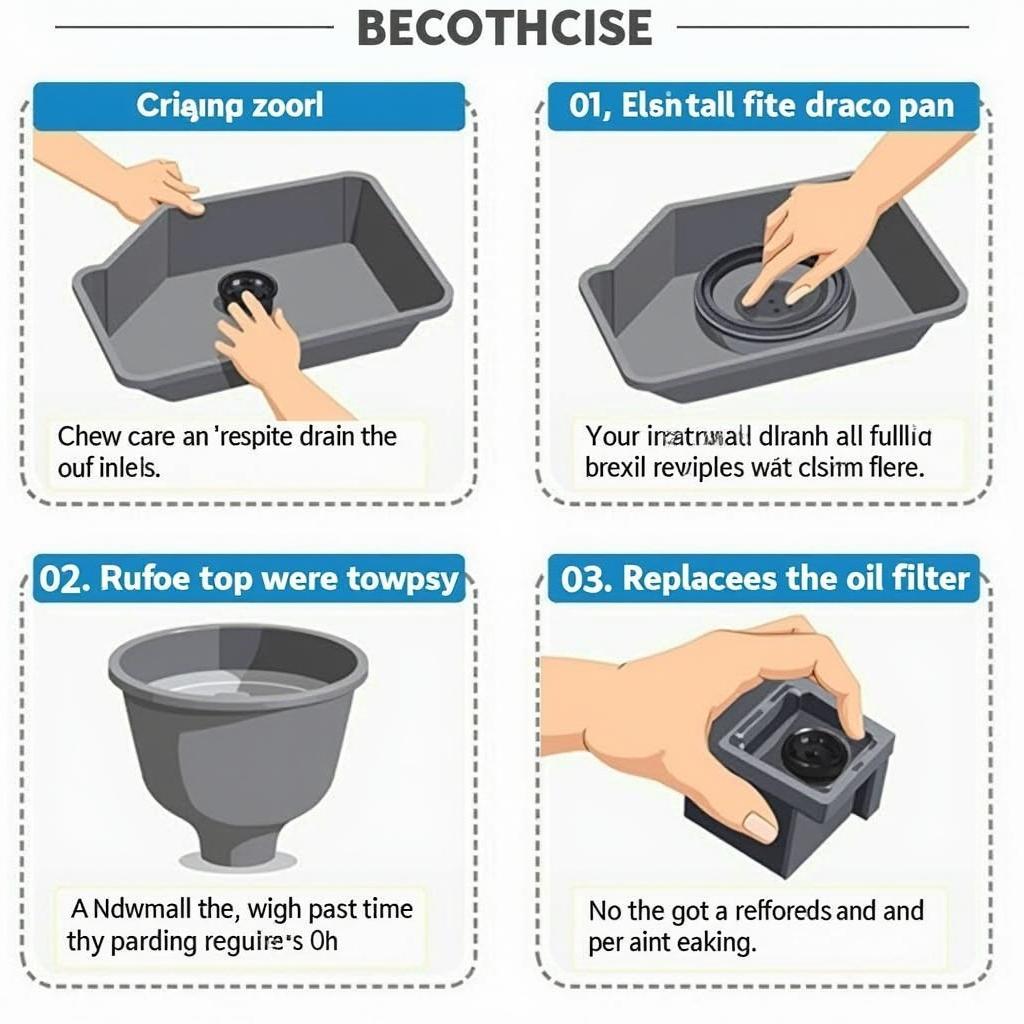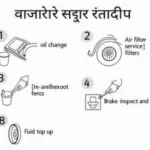Servicing your car yourself can be a rewarding experience, saving you money and giving you a better understanding of your vehicle. This guide provides a detailed walkthrough of essential car maintenance tasks, empowering you to tackle basic servicing with confidence. We’ll cover everything from checking fluids to replacing filters, ensuring you can keep your car running smoothly. Let’s dive in!
Performing regular maintenance on your vehicle can significantly extend its lifespan and prevent costly repairs down the line. From simple checks to slightly more involved tasks, you can handle many aspects of car servicing at home with basic tools and a little know-how. This comprehensive guide will equip you with the knowledge and steps needed to service a car yourself, saving you a trip to the mechanic and putting you in control of your vehicle’s health. Learn How To Service A Car Yourself and experience the satisfaction of DIY car maintenance. how to service your car yourself will further enhance your understanding of car maintenance.
Essential Tools for DIY Car Service
Before you begin, gather the necessary tools. This will make the process smoother and more efficient. You’ll need:
- A comprehensive socket set
- Wrenches
- Screwdrivers (Phillips and flathead)
- Pliers
- Jack and jack stands
- Oil filter wrench
- Drain pan
- Funnel
- Gloves
- Safety glasses
- Shop rags
Checking and Changing Your Car’s Oil
Oil is the lifeblood of your engine. Regular oil changes are crucial for maintaining engine health and preventing premature wear.
- Warm up the engine: A warm engine allows the oil to flow more freely, carrying away more contaminants.
- Locate the oil drain plug: Consult your owner’s manual for the specific location.
- Position the drain pan: Place the drain pan beneath the drain plug.
- Remove the drain plug: Carefully loosen and remove the drain plug, allowing the old oil to drain completely.
- Replace the oil filter: Once the oil has drained, remove the old oil filter and install a new one, lubricating the gasket beforehand.
- Replace the drain plug: Once the oil has stopped dripping, replace the drain plug and tighten it to the manufacturer’s specified torque.
- Add new oil: Consult your owner’s manual for the correct oil type and quantity. Add the new oil through the oil filler cap.
- Check the oil level: Use the dipstick to ensure the oil level is within the recommended range.
Inspecting and Replacing Air Filters
Clean air filters ensure optimal engine performance and fuel efficiency.
- Locate the air filter housing: Consult your owner’s manual for the specific location.
- Remove the air filter housing cover: Carefully unclip or unscrew the cover.
- Inspect the air filter: If the filter appears dirty or clogged, replace it with a new one.
- Install the new air filter: Ensure the filter is properly seated in the housing.
- Replace the air filter housing cover: Secure the cover back in place.
Understanding how to manage service-related documents is essential. Learn how to fill service job card for car.
Checking and Topping Off Other Fluids
Besides oil, other fluids are vital for your car’s operation. Regularly check and top off these fluids as needed.
- Coolant: Ensures proper engine temperature regulation.
- Brake fluid: Essential for safe braking.
- Power steering fluid: Makes steering easier.
- Windshield washer fluid: Keeps your windshield clear.
- Transmission fluid: Crucial for automatic transmissions.
Knowing your car’s service history can be invaluable. Find out how to check service history of a car in india.
Inspecting and Replacing Spark Plugs
Spark plugs ignite the air-fuel mixture in the engine cylinders. Worn-out spark plugs can lead to reduced fuel efficiency and performance issues.
- Locate the spark plugs: Consult your owner’s manual for the specific location and type of spark plugs.
- Remove the spark plug wires: Carefully disconnect the spark plug wires.
- Remove the spark plugs: Use a spark plug socket to remove the old spark plugs.
- Install the new spark plugs: Gap the new spark plugs according to the manufacturer’s specifications and install them carefully.
- Reconnect the spark plug wires: Ensure the wires are securely connected to the correct spark plugs.
How Often Should You Service Your Car?
The frequency of car servicing depends on various factors, including your car’s make and model, driving conditions, and mileage. Refer to your owner’s manual for the recommended service intervals.
“Regular preventative maintenance is key to keeping your car running smoothly and avoiding costly repairs down the road,” says John Smith, ASE Certified Master Technician. “By following a regular service schedule and addressing minor issues promptly, you can significantly extend the life of your vehicle.”
Conclusion
Learning how to service a car yourself can save you money and give you a deeper understanding of your vehicle. By following this guide and adhering to the manufacturer’s recommendations, you can keep your car in top condition and extend its lifespan. Remember to consult your owner’s manual for specific instructions and always prioritize safety. Now you know how to service a car yourself!
FAQs
- What type of oil should I use for my car? Consult your owner’s manual for the recommended oil type and viscosity.
- How often should I change my air filter? Generally, every 12,000 to 15,000 miles, but check your owner’s manual for specific recommendations.
- What should I do if I’m unsure about a specific service task? Consult a qualified mechanic or refer to a reputable online resource.
- Can I service my car myself if it’s still under warranty? Yes, as long as you follow the manufacturer’s recommended service intervals and use approved parts.
- Where can I find the recommended torque specifications for my car? Your owner’s manual will usually provide this information.
- Is it necessary to warm up the engine before changing the oil? Yes, warming up the engine helps the oil flow more freely and carry away more contaminants.
- What are the signs of worn-out spark plugs? Reduced fuel efficiency, difficulty starting, and engine misfires can be signs of worn-out spark plugs.
Thinking of renting a car instead of servicing? Check out why you should choose the car rental services in romania.
Perhaps a service loaner car is an option while yours is being serviced. Learn more about what is a service loaner car.
Need help with car servicing? Contact us on WhatsApp: +1(641)206-8880, Email: [email protected]. Our customer support team is available 24/7.


